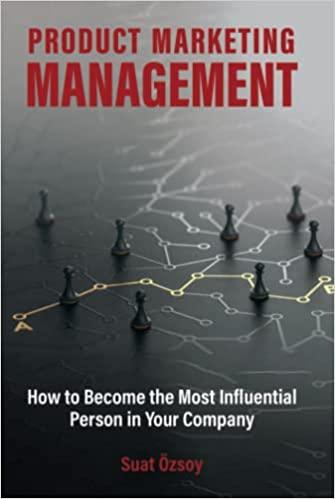Question
TurnItAroundTurbines (TIAT) became one of the first companies to produce fully recyclable wind turbine blades. TIAT's production of fully recyclable wind turbine blades signals a
TurnItAroundTurbines (TIAT) became one of the first companies to produce fully recyclable wind turbine blades. TIAT's production of fully recyclable wind turbine blades signals a significant move towards achieving the company's sustainability goals and demonstrates industry leadership. TIAT has been scrambling to find sustainable end-of-life solutions to match the rising demand for their technology. Although they now have produced 100% recycled blades, the problem of decommissioned TIAT blade disposal is a focus of management. It is common knowledge within the global wind turbine industry that by 2050, 43 million tonnes of decommissioned 80-metre-long turbine blades would reach their end of life and need to be managed through the global waste stream. However, TIAT sees this problem as an opportunity to lead the global solution for the disposal of blades. TIAT knows that the blades currently installed globally are only 85% recyclable, the last 15% of the process is challenging due to the non existence of technology to separate the resin exterior binding from the glass and carbon fibre exterior and filled interior. The current disposal practice for decommissioned wind turbine blades globally is to bury them in large landfill sites. The CEO of TIAT is receiving significant pressure from the company's internal and external stakeholders to change their current practice of burying the blades. The current TIAT practice does not address the companies sustainability goals. Due to the first decommissioned TIAT blades requiring disposal within the following 24 months, time is running out.
Decision Making, Change Management and Operations:
a. Describe a six or eight step decision making process that could be used to organise a meeting to discuss TIAT wind turbine waste disposal with stakeholders. Use the case study above to explain your points.
b. Discuss two external forces for change that may be impacting on the case study. Provide examples.
c. Define value chain management. Why is understanding value chain management important for the case study scenario?
(Need in-text citation and references)
Step by Step Solution
There are 3 Steps involved in it
Step: 1

Get Instant Access to Expert-Tailored Solutions
See step-by-step solutions with expert insights and AI powered tools for academic success
Step: 2

Step: 3

Ace Your Homework with AI
Get the answers you need in no time with our AI-driven, step-by-step assistance
Get Started


